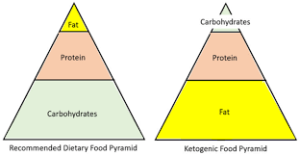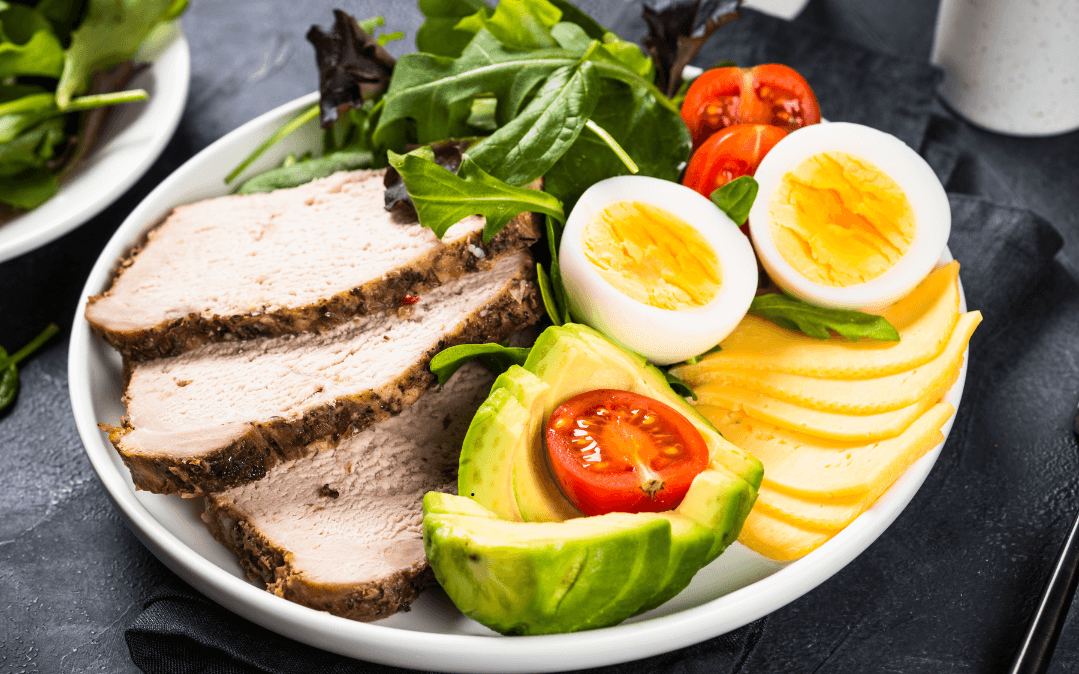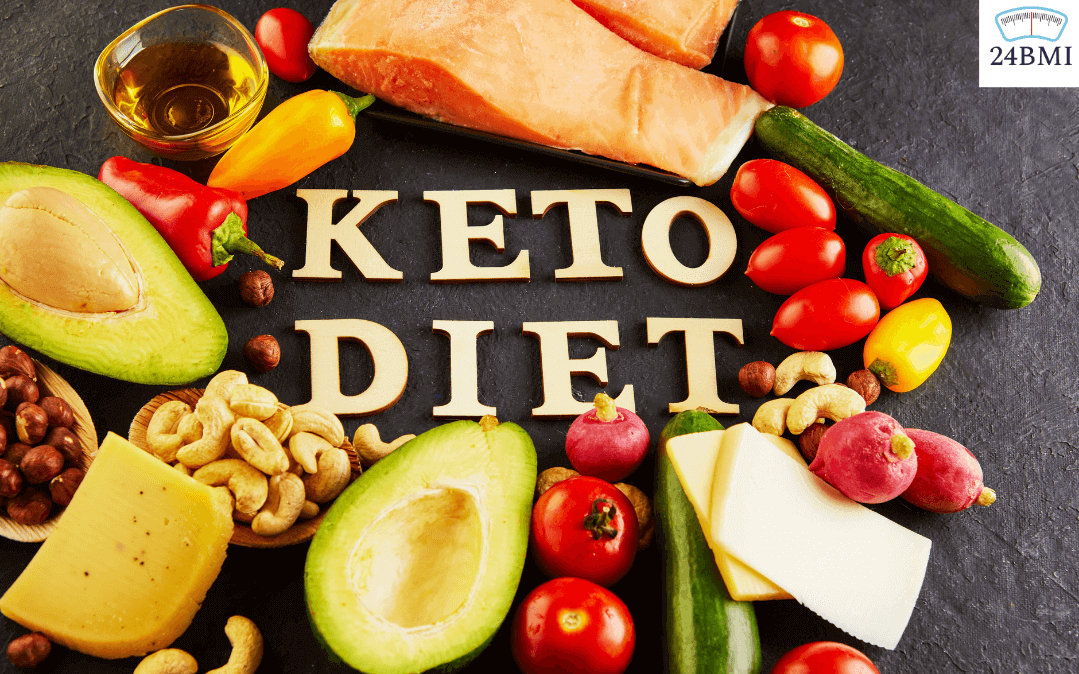Dr. Richa Bhatia
Ketogenic Diet
The ketogenic diet (or keto diet) is a low-carb, fat-rich diet that has been used for centuries to treat specific medical conditions. Originally used to treat drug-resistant epilepsy in children, the diet gained considerable attention as a weight-loss strategy in 1970s.
The Mechanism
Carbs intake is severely restricted in a keto diet. If you deprive the body of glucose (source of energy obtained from carbs), an alternative fuel called ketones is produced from stored fat (hence the term “keto”-genic). If this continues for 3-4 days, blood levels of insulin decrease, and the body begins to use fat as primary fuel. Ketones are created in the liver and used as energy on a keto diet. When ketone bodies accumulate in the blood, this is called ketosis.

‘Recommended Food Pyramid vs. Keto Food Pyramid’
Ketoacidosis
Excessive ketone bodies can produce a dangerously toxic level of acid in the blood, called ketoacidosis. Ketoacidosis most often occurs in individuals with type 1 diabetes because they do not produce insulin, a hormone that prevents the over-production of ketones. However in a few rare cases, ketoacidosis has been reported to occur in non-diabetic individuals.
Proponents of the ketogenic diet state that if the diet is carefully followed, blood levels of ketones should not reach a harmful level, as healthy individuals will typically produce enough insulin to prevent excessive ketones from forming.
1 Keto flu
It is your body’s reaction to going into ketosis, and it often resembles flu-like symptoms which is the effect of carbohydrate withdrawal.
The Diet
Keto diet typically reduces total carbs intake to less than 50 grams a day. Popular ketogenic resources suggest an average of 70-80% fat from total calories, 10-20% protein, and 5-10% carbs. For a 2000-calorie diet, this translates to about 160 grams fat, 80 grams protein, and 40 grams carbs. Most ketogenic plans allow foods high in saturated fat, as well as unsaturated fats such as nuts, seeds, avocados, plant oils, and fish.
Many versions of ketogenic diets exist, but all ban carb-rich foods. Some of these foods may be obvious: Refined/whole-grains (like breads, cereals, pasta, rice, cookies); potatoes and other starchy vegetables. Some that may not be so obvious are beans, legumes, corn and most fruits.
There are some different approaches to a keto diet:
- Ketogenic diet (KD) – usually less than 50 grams of carbohydrates per day.
- Very low calorie Ketogenic diet (VLCKD) – same as KD, but limits total calories to a maximum of 800 calories per day.
A very low carb keto diet that is high in fat (but low in protein) is an effective means for weight loss in those who are overweight or obese.
Foods Allowed
- Strong emphasis on fats at each meal/snack to meet the high-fat requirement.
- Some dairy foods may be allowed. Although dairy can be a significant source of fat, some are high in natural lactose sugar such as cream, ice cream, and full-fat milk so they are restricted.
- Most non-starchy vegetables are included. Certain fruits in small portions (like berries) are allowed.
- Dark chocolate (90%), unsweetened coffee and tea are allowed.
Not Allowed
- Whole/refined grains, most fruits, starchy vegetables like potatoes and corn.
- Legumes including beans, lentils, and peanuts.
- Any foods with added sugar; Alcoholic drinks.
2 Research Findings
Weight loss at the start of the diet may be rapid, in some cases as much as 5 Kgs in two weeks. Several theories exist as to why the ketogenic diet promotes weight loss, though they have not been consistently proved.
The following is a summary of research findings:
- A meta-analysis of 13 randomized controlled trials found that the ketogenic diet produced a greater reduction in weight compared with the low-fat diet.
- A study of 39 obese adults placed on a very low-calorie keto diet for 8 weeks found a mean loss of 13% of their starting weight.
- The mechanism at work could be:
- A satiating effect with decreased food cravings due to the high-fat content of the diet.
- A direct hunger-reducing role of ketone bodies.
- A decrease in appetite-stimulating hormones, such as insulin and ghrelin.
- Increased calorie expenditure due to converting fat and protein to glucose.
Limitations
Keto diet is connected to a rise in LDL cholesterol, which is linked to heart disease. Because there is so much fat to digest, the diet may aggravate any existing liver problems. Kidneys assist in protein metabolism, and the keto diet may cause them to become overworked. Since the diet restricts carbs, it’s typically low in dietary fiber; which may have a negative impact on gut health. In this case, it’s worth making sure you are consuming plenty of leafy greens.
Possible nutrient deficiencies may arise if a variety of recommended foods on the keto diet are not included. It is important to include a daily variety of allowed meats, fish, vegetables, fruits, nuts and seeds to ensure adequate intakes of fiber, B vitamins, and micronutrients.
Following a very high-fat diet may also be difficult to sustain. Possible symptoms of extreme carbs restriction include: hunger, fatigue, low mood, irritability, constipation, headaches, and brain “fog.” Though these feelings may subside, staying satisfied with the limited variety of foods may present challenges. Some negative side effects of a long-term keto diet have been suggested, including increased risk of kidney stones and osteoporosis, and increased blood levels of uric acid (a risk factor for gout).
3 Following individuals should stay away from a keto diet:
- Individuals with insulin dependent diabetes
- Individuals who take SGLT2 inhibitors (a class of medication for type 2 diabetes).
- Individuals with pancreatitis or kidney illness
- Women who are pregnant or breastfeeding
- Individuals with kidney and/or liver disease (or a family history)
Ketogenic diet is absolutely contra-indicated in the treatment of other diseases such as some rare genetic disorders of fat metabolism. On the ketogenic diet, their bodies would consume their own protein stores for fuel, leading to keto-acidosis, and eventually coma and death.
Programs suggest following a ketogenic diet until the desired amount of weight is lost. When this is achieved, one may follow the diet for a few days a week, with other days allowing a higher carb intake.
Conclusion
Available research on the ketogenic diet for weight loss is still limited. A ketogenic diet has been shown to provide short-term benefits in some people including weight loss and improvements in total cholesterol, blood sugar, and blood pressure. However, these effects after one year when compared with the effects of conventional weight loss diets are not significantly different.
Eliminating several food groups and the potential for unpleasant symptoms may make compliance difficult. An emphasis on foods high in saturated fat may have adverse effects on LDL cholesterol. However, it is possible to modify the diet to emphasize foods low in saturated fat (such as olive oil, avocado, nuts and seeds).
A ketogenic diet may be an option for some people who have had difficulty losing weight with other methods. It is recommended to consult a dietitian to create a meal plan that is tailored to one’s existing health and to prevent nutritional deficiencies.
Keto diet has numerous risks. Top of the list: it’s high in saturated fat. It is recommended that you keep saturated fats to no more than 7% of your daily calories because of the link to heart disease. It’s best to restrict keto diet for a short-term therapy to help jump-start weight reduction.
If you’re considering attempting any form of diet, please consult your GP to ensure you can do so without any serious health risk.



